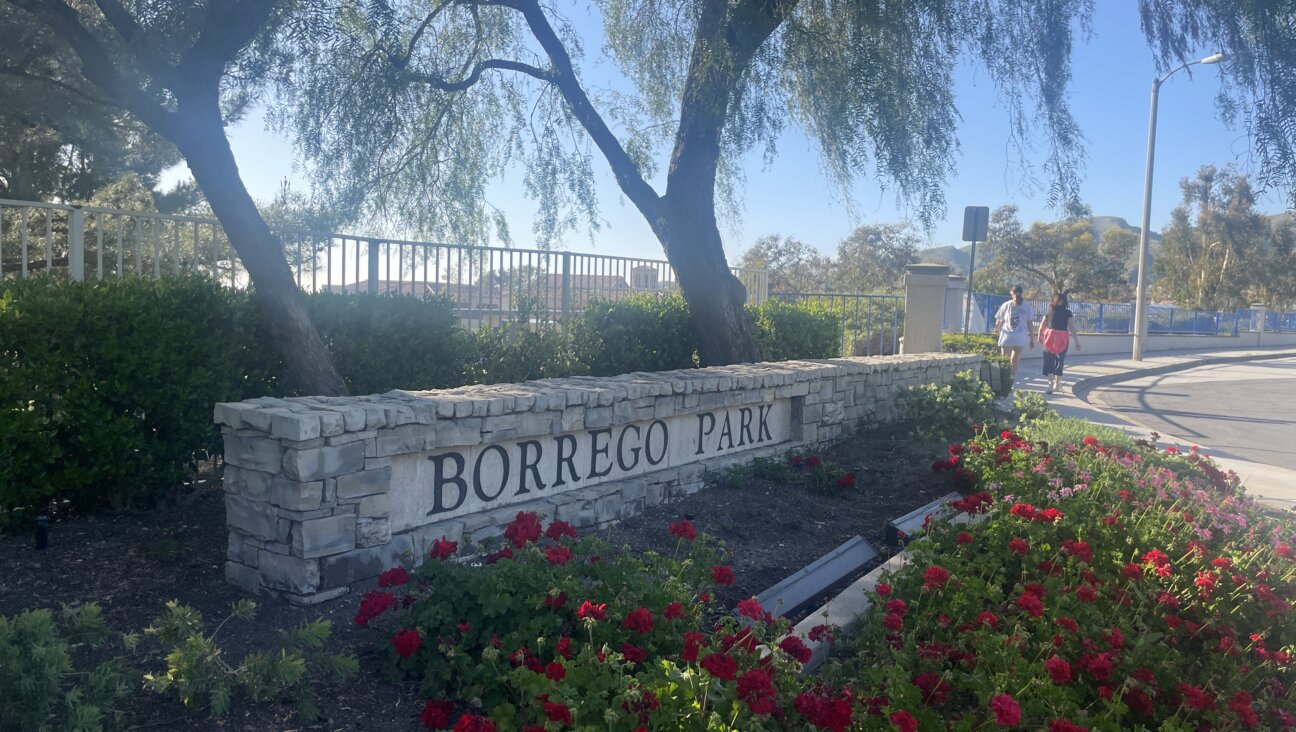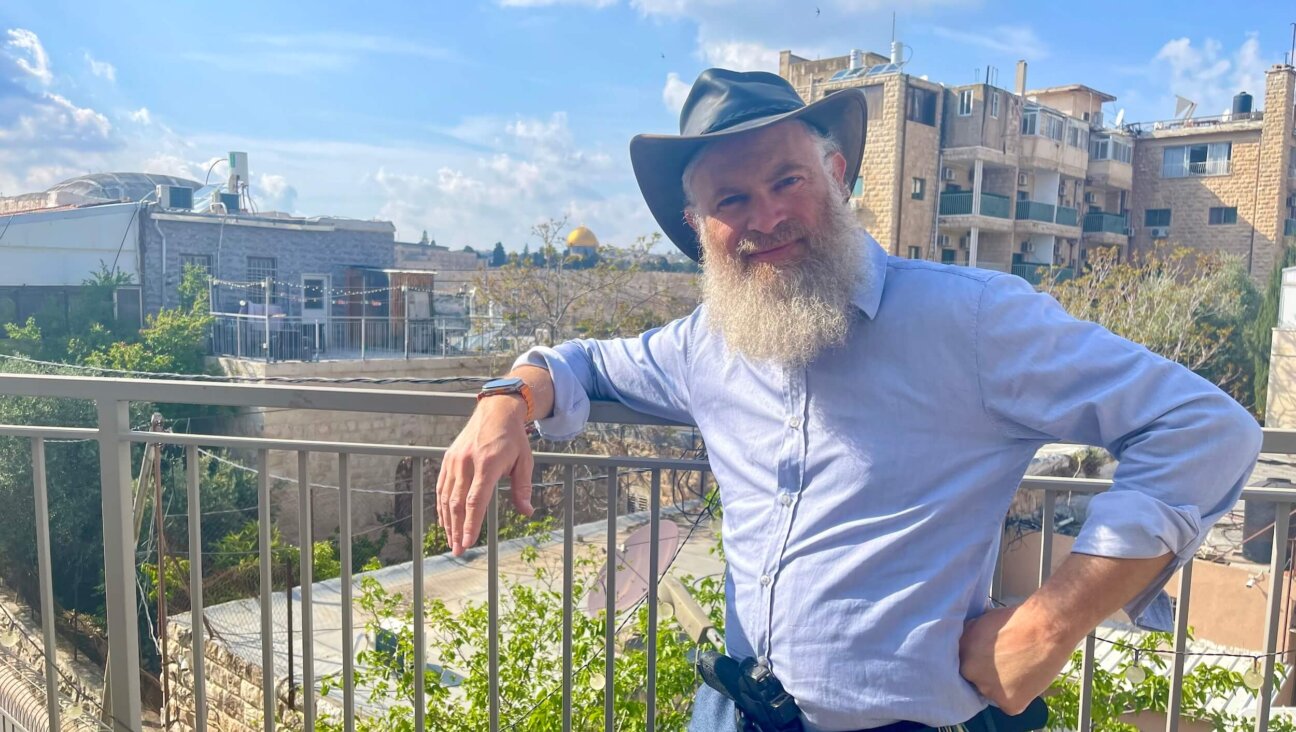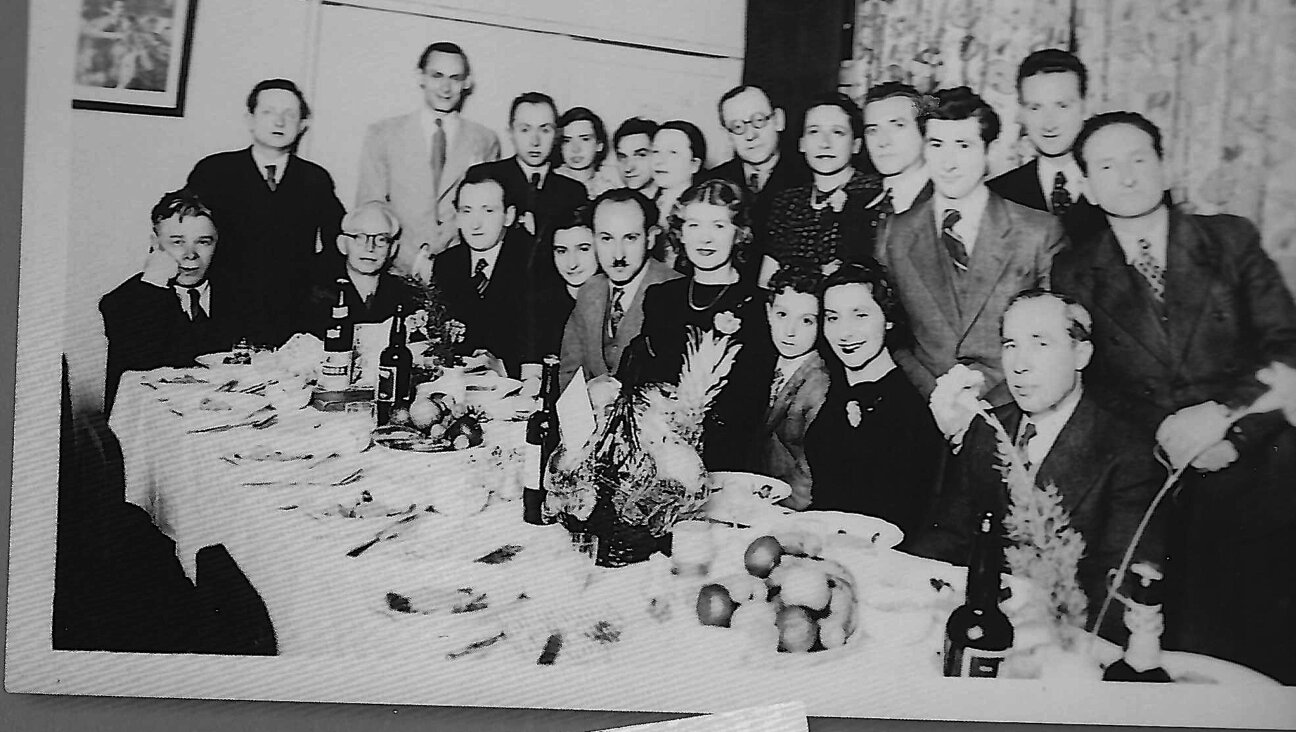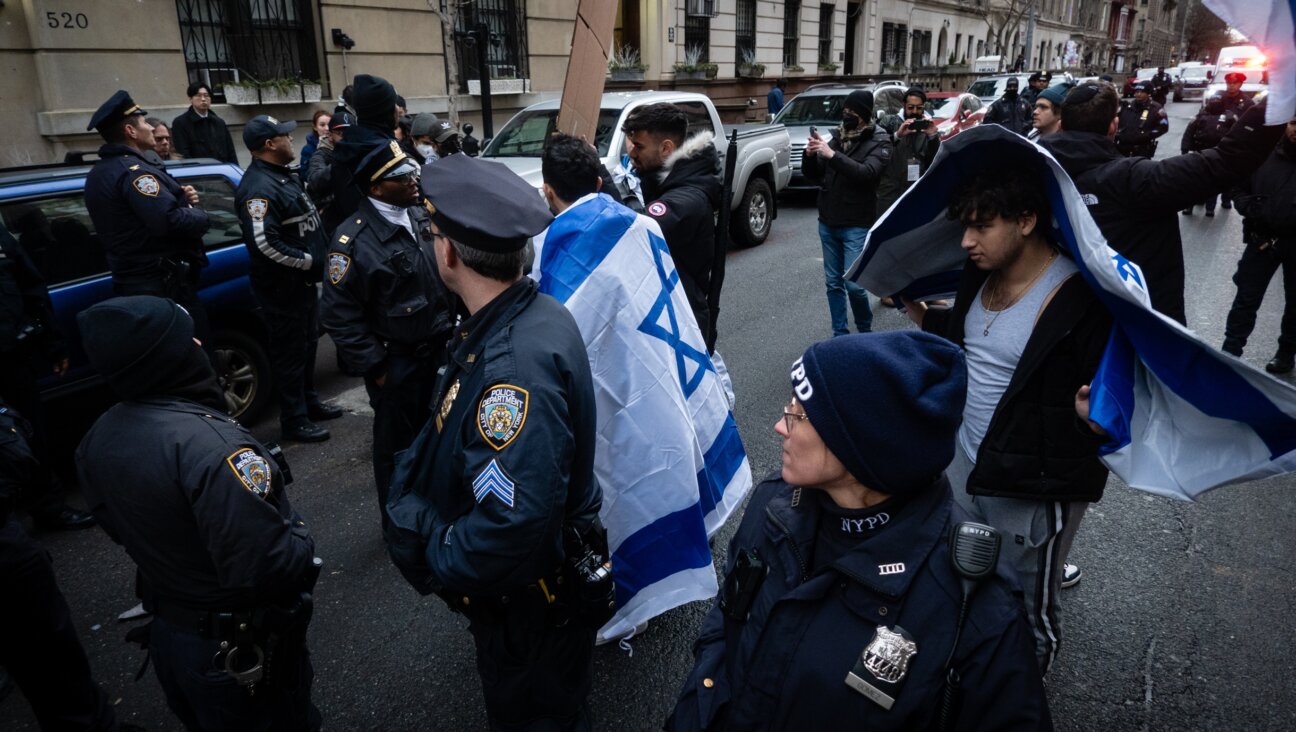A New Architecture for a New Kind of Jew
American Synagogues: A Century of Architecture and Jewish Community
By Samuel Gruber
Photography by Paul Rocheleau
Edited by Scott J. Tilden
Rizzoli International Publications, 240 pages, $50.
* * *|
For Rachel Wischnitzer’s 1955 book “Synagogue Architecture in the United States: History and Interpretation,” the first and last great survey of the subject, architect Philip Johnson was invited to write a brief preface. It was a strange choice. Johnson was then only a few years from his short but very active career as a practicing antisemite, a period that included a failed debut as a fascist politician and a more successful stint as a fellow-traveling journalist. After that time, as if in penance, Johnson made occasional efforts to repair his name among Jews — his famous synagogue, Kneses Tifereth Israel in Port Chester, N.Y., was designed for free — and his uncharacteristically mild words in Wischnitzer’s book might be seen as a continuation of that campaign. Still, with the quiet wit that has always saved him, Johnson could not resist sliding in one left-handed compliment. The synagogue, he wrote, is worthy of study because it is the only building type in which we can find an example of every American style.
No one would disagree with that assertion; just casting around the island of Manhattan one can see Jews gathering in retooled Roman temples, flying-carpet casbahs and even a travertine-skinned spaceship or two. But the question to ask, as many of us prepare for our annual reacquaintance with religious space, is why? Why do synagogues look the way they do? Why are there no reigning, native Jewish styles? (Or is one out there, hidden in plain sight?)
Defining what might amount to a true “Jewish Architecture” is a thorny issue. In the realm of Jewish art, a path through that thicket has been partially cleared. A longer, less contingent history in the graphic arts and ritual objects has become the subject in recent years of an academic cottage industry. In books such as “The Nation Without Art: Examining Modern Discourses on Jewish Art (Texts and Contexts)” (University of Nebraska, 2001), “The Artless Jew: Medieval and Modern Affirmations and Denials of the Visual” (Princeton University, 2000) and “Jewish Icons: Art and Society in Modern Europe” (University of California, 1998), critics and historians have begun to examine the questions posed by Jewish art: What does it reveal of Jewish identity? What role does the Second Commandment play in curbing Jewish expression? Is art by a Jew necessarily Jewish? Why is modern art so consonant with the modern Jewish soul? The titles themselves suggest the canard that these books aim to shoot down: that Jews, ever wandering, bound by tradition, made no art.
A similar myth governs Jewish architectural history, but it persists unchallenged. Examinations of the synagogue inevitably return to this easy out: “Jews built in the styles around them.” That one idea has sustained scholarship for at least a century. It has been applied reflexively and relentlessly by every scholar who has looked at the architecture of the synagogue in prewar Europe, where the idea has passing merit, and in postwar America, where it has none.
“American Synagogues: A Century of Architecture and Jewish Community,” written by Samuel Gruber and published recently by Rizzoli, may be the best book on the subject to appear in the nearly five decades since Wischnitzer. Gruber, a professor in Judaic studies at Syracuse University, wisely attempts to wed the shifting styles of synagogues to real world stimuli: the advent and rise of the Reform movement, the postwar “return to religion,” keeping up with (or showing up) the gentile Joneses. And if in the accelerated pace of this short, photo-heavy book he cannot always nail such cause and effect — there is precious little discussion, for instance, of the mechanics of suburban immigration, the definitive context for the postwar boom in temple building and the shape of Jewish culture today — Gruber’s is the first book outside of academia to make a concerted gesture in that direction.
Still, despite — or perhaps because of — his training as an art historian, Gruber seems reluctant to question fixed ideas on the nature and use of styles. Indeed, joining that longstanding chorus, he assigns Jews exclusively to the position of cultural consumers: “Throughout the centuries, with few exceptions,” he writes in his first chapter, “synagogues have followed the architectural and artistic preferences of the surrounding (non-Jewish) societies.”
In Europe, maybe, but that was not the case in the America that Gruber’s book addresses. Even before the emergence of modernism as a de facto Jewish style after World War II — within the synagogue and far beyond it — the majority did not rule. Choice came into play as it never had before. And even if buildings such as Manhattan’s Moorish Central Synagogue or the Romanesque basilica of Temple Emanu-El were built in styles evolved elsewhere and for other purposes, the particular flavor of such buildings was chosen to distinguish them from their neighbors — decorously, but firmly. They were not built in the styles around them, but neither were they built in a style of their own. Then again, before modernism, nothing was.
It is in the modern synagogue, emerging from the cultural riptides of midcentury Jewish life, that — for the first time in the Diaspora — Jews set about to create a purpose-built Jewish architecture rendered in a distinctly Jewish style. Quibblers will scream about the wooden temples of the Pale and I concede the point. But few among us will be davening in those lost buildings over the next several weeks. And the modern synagogues that dot the suburbs are full of secrets.
Everyone has visited modern synagogues, and everyone has probably at some point tried to make sense of the motivations behind the artistic gamble those buildings represent: the Sinai-striving roofscapes, the yahrzeit walls aglow like Broadway, the incongruous evocations of a Jetsons divine. Gruber’s book is strong regarding the postwar period, telling the story of these strange buildings in broad strokes through well-chosen examples, including the granddaddy of them all, Frank Lloyd Wright’s extravagant, extraterrestrial Beth Sholom Synagogue in Elkins Park, Pa. But, taking the buildings as they come — taking their style as a given served up by some benevolent zeitgeist — Gruber only interrogates them lightly. He is right to underline the revolutionary nature of Percival Goodman’s Milburn temple in New Jersey, the first synagogue to integrate commissioned works of modern art. But there is much more to that story. How did the architect lead his congregation to approve this expenditure? What arguments did he deploy to convince a modest, suburban congregation to ally itself so closely — in the late-1940s — with modern art? What were the congregants trying to make their building say?
Though modernism was embraced by Jews in full, it was not inevitable. The same range of options that exists today — competing flavors of the new and various favored looks from the past — was available to the postwar temple-builders; as Gruber notes, a Colonial synagogue built in Worcester, Mass., as late as 1949 raised few eyebrows. For business-savvy American architects, even after the war, “modernistic” was just another look to offer their more intrepid clients. How did it so quickly become the only style for Jews? This is the big question, and the answer is simple and endlessly revealing: Jews chose modern architecture. They chose it carefully and collectively. They chose it way ahead of the national curve. And they chose it because it best represented the image that they wanted to project — that they needed to project — on the postwar American scene.
By sidestepping history, the modern synagogues found a solution to that inveterate problem, developing an organic style for the synagogue, and to a novel one: creating new forms for a new kind of Jew. These buildings did not adopt styles a la carte; they were not built to fit in. After World War II, American synagogues attacked the myth of “artlessness” with ebullient art. Now, they are just standing there, waiting to tell us why.
Philip Nobel, who writes for Metropolis, Architectural Digest and The New York Times, is working on a book about the redevelopment of the World Trade Center site.

I hope you appreciated this article. Before you go, I’d like to ask you to please support the Forward’s award-winning journalism this Passover.
In this age of misinformation, our work is needed like never before. We report on the news that matters most to American Jews, driven by truth, not ideology.
At a time when newsrooms are closing or cutting back, the Forward has removed its paywall. That means for the first time in our 126-year history, Forward journalism is free to everyone, everywhere. With an ongoing war, rising antisemitism, and a flood of disinformation that may affect the upcoming election, we believe that free and open access to Jewish journalism is imperative.
Readers like you make it all possible. Right now, we’re in the middle of our Passover Pledge Drive and we need 500 people to step up and make a gift to sustain our trustworthy, independent journalism.
Make a gift of any size and become a Forward member today. You’ll support our mission to tell the American Jewish story fully and fairly.
— Rachel Fishman Feddersen, Publisher and CEO
Join our mission to tell the Jewish story fully and fairly.
Our Goal: 500 gifts during our Passover Pledge Drive!
























